Text
Subject: Acting

"...We see similar ideas expressed in François Regnault's discussion of Robert De Niro's performance in Martin Scorsese's NEW YORK, NEW YORK (1977). Regnault argues that the greater part of critical thought about cinema has involved the elimination of the actor as a real body (such as the actor would be on the stage) either through the breaking up of the image through editing or through working with on-screen and off-screen space. Regnault asserts that the great screen actor is aware of the intervening technologies involved in filmmaking and "plays with the whole of the set, with the camera that looks at him, with the technical end of things, all as though with a musical instrument.
Regnault defends De Niro's performance precisely because it says "See how I like to act." Comparing De Niro to Chaplin, he concludes that what rescues the performance from being mere clowning is: the recognition in him [De Niro] by us of this inner jubilation which is sent out from the invisible nature of the actor and to which he adds the humility of visible know-how. It is the jubilation that makes of every great actor a comic actor. What great actor is not comic?"
Recalling the great admiration Brecht had for Chaplin, one can see the clear relation to a Brechtian attitude: the ideal actor is not the one who creates a convincing illusion of reality but the one who produces the most pleasure in the comparison of the illusion to reality, in acknowledging how he has helped create the illusion."
Bertolt Brecht Cahiers du Cinéma and Contemporary Film Theory Chapter 10: The Late 70s and After
0 notes
Text
Subject: Directing
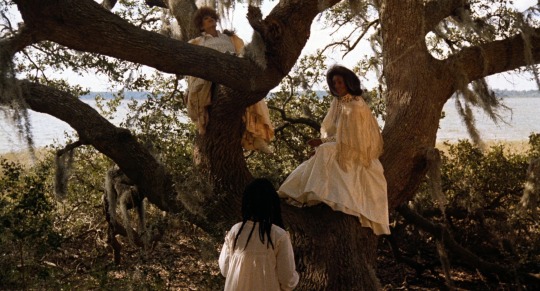
"Dash films the characters with a blend of physical precision and hieratic grace; there’s an ordinary declamation to the dialogue that heightens it even above the everyday grandeur of endurance to the gravity of the moment at hand. Snead is there to document a moment that, the family knows, is decisive for each of them, and the very tone of their voices and force of their gestures reflects their tremulous, sacred awareness that the course of their own lives and the family name is now, more than ever, in their hands.
Yet, along with the gravity of the occasion, there’s also the local pageantry of dancing on the beach, children’s games, the festivity of a picnic, the formality of posed group photographs, and organized ceremonies blending family bonds with ancient practices. Dash—deftly employing music by John Barnes—fuses the societal and political implications of the occasion with art and culture, religion and idiosyncratic family customs."
0 notes
Text


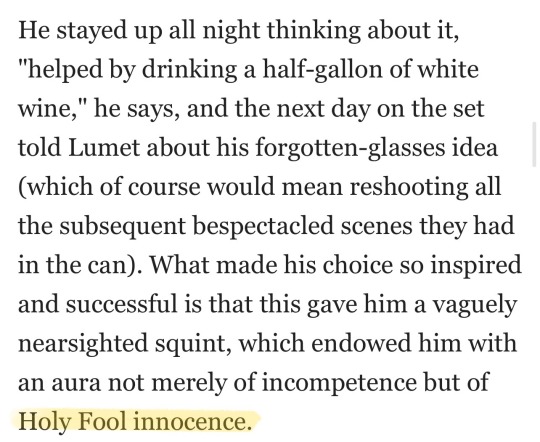
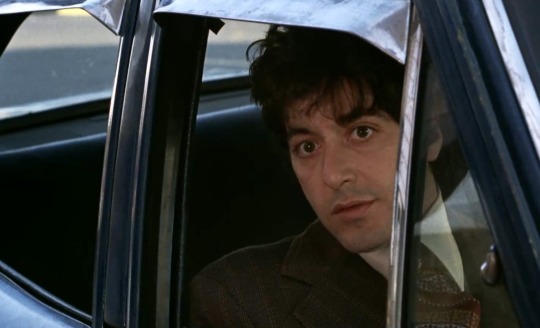


"Out of the Shadows" Vanity Fair, 1989 | "Homosexuality in 'Dog Day Afternoon' : Televisual Surfaces and a 'Natural' Man" 2012
1K notes
·
View notes
Text
Subject: Plot, Writing
'''Narrative' is a term that implies things being in sequence: one situation followed by a subsequent (and presumably different, but related) situation. The word 'dramatic' implies doing or being done to, an action or reaction. Narrative/dramatic structure (a story) therefore depends on the connections of cause-and-effect. A consequence of the first incident or situation is that a new (and often very different) situation will arise. Simple as this is to explain, it is frequently difficult for the student filmmaker to grasp in practice. And practice is what it seems to take.
Of the three basic elements of a film story (plot, theme and character), plot is in many ways the least important. A story's plot is the sequential ordering of connected events and incidents (usually in the form of cause-and-effect) that sustains the narrative momentum. But in the end, when a good story is over, it is seldom the plot that sticks in our memory- it is the situations and the characters, and sometimes what we call the theme. Not too long ago it was argued that conventional narrative structures (stories with plots) were dead, that it was, apparently, no longer either necessary or desirable to make films of this type.
Though this is a rather Modernist reaction, it does raise useful questions. Is plot in itself rewarding? If the most intelligent among contemporary audiences have become bored by emphasis on plot, is it because the tidal wave of second-and third-rate entertainments seen on the screen and television are nothing but plot, full of characters who are no more than figures manipulated by the strings of stories far from being either credible or interesting, or with themes worth considering? And so on. It is clear, however, that without the underpinning of a solid plot, the other elements can sometimes fail to hold the attention of popular audiences."
On Film-making, Alexander Mackendrick
0 notes
Text
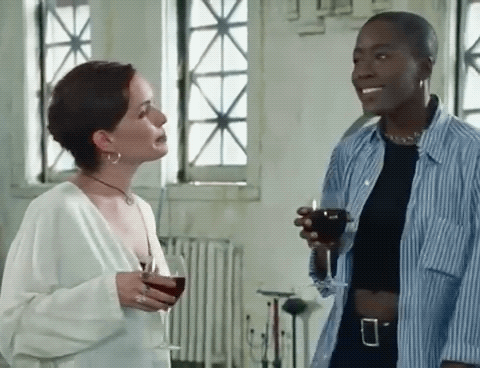









"In 1979 Barbara Smith wrote, 'Even now I don’t know that one can write about being a black and a lesbian and live to tell about it.' In 2005, black women write about a variety of sexual and gender identities and live to tell the story. However, the more relevant question is, what now? The Watermelon Woman allows us to identify the ways in which black queer perspec- tives alter the terms and challenge the assumptive logics of black history and cultural production. This work is not simply celebratory, but complicated and often troubling in its depictions. Challenging complicities and compromises to power in order to participate in the 'normalizing' narrative project of history, black lesbian filmmaking creates tensions within the historical framework of the black past, speaking queer experience to black history."
“Our stories Have Never Been Told: Preliminary Thoughts on Black Lesbian Cultural Production as Historiography in The Watermelon Woman” by Matt Richardson
Black Camera, Vol. 2, No. 2, Special Issue: Beyond Normative: Sexuality and Eroticism in Black Film, Cinema, and Video (Spring 2011), pp. 100-113
(Film Analysis Hours)
410 notes
·
View notes
Text

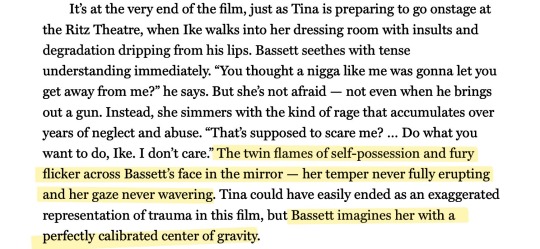





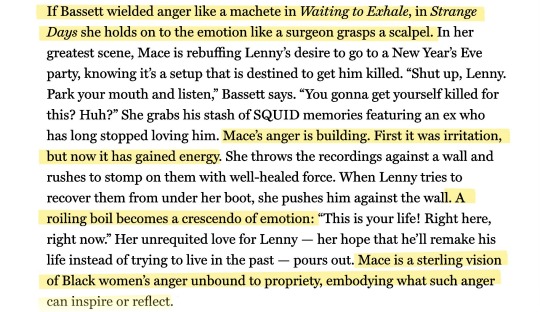


"Bassett’s skills have often been construed on lines of strength and intellect. Yes, her characters are strong and intelligent and refuse to bend fully to the whims of others in order to retain possession of themselves. But to acknowledge Bassett for simply excelling at portraying strong Black women is a disservice.
Strength is often a bind for Black women. It’s an expectation thrust upon us. What Bassett has been able to do with anger, an emotion rarely afforded to Black women in life or onscreen, is the real meat of her career. She is the Black actress in mainstream U.S. cinema to most consistently portray anger with the care and complexity such a depiction deserves."
"The Self-possession of Angela Bassett"
by Angelica Jade Bastién
Vulture, March 2023
(Film Analysis Hours)
111 notes
·
View notes
Text
Subject: Directing
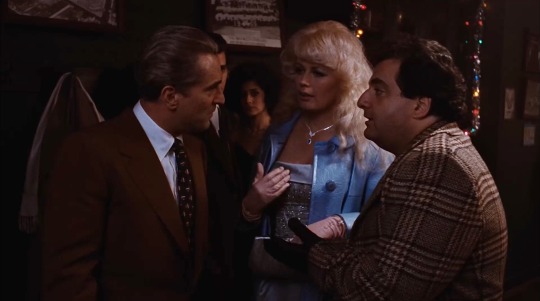


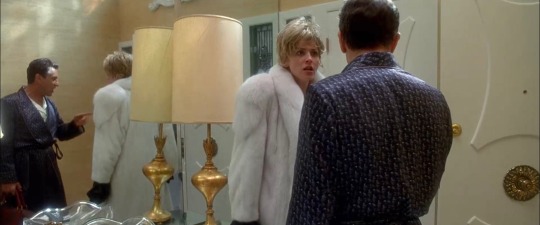
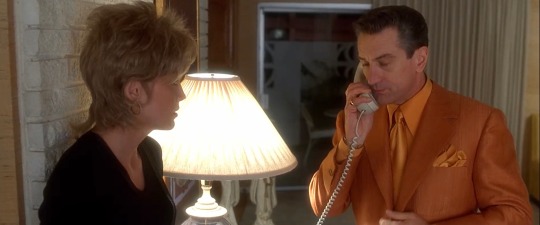
Films: Goodfellas (1990), Casino (1995)
"There's a certain freedom in Goodfellas, as it's mostly medium shots, where the actors have room to move. But that's the world these characters live in. It's not a world of close-ups. They have people around them all the time, and what they do always affects the world around them. So you have to shoot it in medium shots.
It's important not to restrict actors. But, on the other hand, I cannot let actors give me something that I don't want. On a film like Casino, there was a lot of improvisation, which is fine. If an actor feels really comfortable playing that character in that world, I let him improvise within a given scene, and I cover it in a pretty straightforward manner: medium shots, close-ups... When you do that, the world is pretty much created by the actors. I place them in the frame, and the set around them is part of their life, but they bring the life to it. When that happens, and when it goes in the direction you wanted, it can be incredibly rewarding."
- Martin Scorsese, Moviemaker's Master Class by Laurent Tirard
(X)
#subject: directing#martin scorsese#casino 1995#goodfellas 1990#directors#film analysis hours#id in alt text
41 notes
·
View notes
Text
Film Analyses/Reviews
The Sacraments of Genre: Coppola, DePalma, Scorsese
Operatic Style and Structure in Coppola's "Godfather Trilogy" (Pt. I) (Pt. II)
The Tragedy of Michael Corleone in "The Godfather: Part III"
Animated Nature: Aesthetics, Ethics, and Empathy in Miyazaki Hayao's Ecophilosophy
The Precarious Politics of Precious: A Close Reading of a Cinematic Text (X)
As I Lay Dying: Violence and Subjectivity in Tarantino’s Reservoir Dogs (X)
Shifting Gears and Paradigms at the Movies: Masculinity, Automobility, and the Rhetorical Dimensions of "Mad Max: Fury Road"
Review: Godfather: The Intimate Francis Ford Coppola
Two Thousand Light Years from Home: Scorsese's Big CASINO (X)
TIME PIECES: WONG KAR-WAI AND THE PERSISTENCE OF MEMORY (X)
Matter out of Place: Carnival, Containment, and Cultural Recovery in Miyazaki's "Spirited Away" (X)
Disney's Moana, the Colonial Screenplay, and Indigenous Labor Extraction in Hollywood Fantasy Films
Viewing Sinophone Cinema Through a French Theoretical Lens: Wong Kar-wai's "In the Mood For Love" and 2046 and Deleuze's "Cinema" (X)
The Parallelism of the Fantastic and the Real: Guillermo del Toro’s Pan’s Labyrinth/El Laberinto del fauno and Neomagical Realism (X)
"Back to the Future": Oedipus as Time Traveller ("Retour vers le futur": Oedipe, voyageur du temps)
Beyond the Male Romance: Repetition as Failure and Success in Apocalypse Now
Beautiful Friendship: Masculinity and Nationalism in "Casablanca"
GIRL POWER: BACK TO THE FUTURE OF FEMINIST SCIENCE FICTION WITH INTO THE FOREST AND ARRIVAL
"Leave the Gun. Take the Cannoli." How Machiavelli's The Prince Exemplifies the Gangster in The Godfather and A Bronx Tale
Film as Literature: TWO SCREENPLAYS (Taxi Driver, Goodfellas)
Where Did the Goodfellas Learn How to Cook? Gender, Labor, and the Italian American Experience
Goodfellas Review (1991)
Where is the Bawdy? Falstaffian Politics in Gus Van Sant's "My Own Private Idaho" (X)
The Filmmaker as DJ: Martin Scorsese’s Compiled Score for Casino (1995)
EAST Meets WEST: "Casablanca vs. The Seven Samurai"
The Power of Adaptation in "Apocalypse Now"
Animalizing "Jurassic Park's" Dinosaurs: Blockbuster Schemata and Cross-Cultural Cognition in the Threat Scene
Review: American Psycho
The Feminine Hero of The Silence of the Lambs (X)
"Fight Club'"s Queer Representations (X)
Tiny Life: Technology and Masculinity in the Films of David Fincher (X)
Complex Design in "The Empire Strikes Back" (X)
SAVAGE PLACES REVISITED: CONRAD'S "HEART OF DARKNESS" AND COPPOLA'S "APOCALYPSE NOW"
PORTRAITS OF THE POSTMODERN PERSON IN TAXI DRIVER, RAGING BULL, AND THE KING OF COMEDY
(Taxi Driver) (Raging Bull)
Homosexuality in "Dog Day Afternoon" (1975): Televisual Surfaces and a "Natural" Man (X)
Where Did All the Heroes Go? (Dog Day Afternoon)
Italian-Americans in Film: From Immigrants to Icons
God's Lonely Man: "Taxi Driver" in Script and Screen
A Slice of Delirium: Scorsese's "Taxi Driver" Revisited
Kafka on the Screen: Martin Scorsese's "After Hours" (X)
Stalking 'The Deer Hunter'
Gender, Genre, and Myth in "Thelma and Louise" (X)
Restaging the War: "The Deer Hunter" and the Primal Scene of Violence
"The Godfather, I and II": Patterns of Corruption (X)
Making the Milk into a Milkshake: Adapting Upton Sinclair's "Oil!" into P. T. Anderson's "There Will Be Blood"
Child of the Long Take: Alfonso Cuaron's Film Aesthetics in the Shadow of Globalization
THE SWOLLEN BOY: Paul Thomas Anderson's BOOGIE NIGHTS and Diggler Days
Love in Time: Julie Delpy, Ethan Hawke, and Richard Linklater's "Before" Films
Other
Al Pacino (X)
Lies and Loneliness: An Interview with Tony Leung Chiu Wai
Wong Kar-Wai (Interview)
Imagism and Martin Scorsese: Images Suspended and Extended
Docufictions: An Interview with Martin Scorsese on Documentary Film
Orson Welles: The Human Side of Genius
Eavesdropping On Female Voices: A WHO'S WHO OF CONTEMPORARY WOMEN FILMMAKERS (1987)
Disappearance of Elaine May
THE NON-DIEGETIC FALLACY: FILM, MUSIC, AND NARRATIVE SPACE
Hollywood Movie Dialogue and the "Real Realism" of John Cassavetes
THE WORK OF JOHN CASSAVETES: SCRIPT, PERFORMANCE STYLE, AND IMPROVISATION
The Adventure of Insecurity: The Films of John Cassavetes
Prospero's Muccs: The Meaning of Martin Scorsese's Italian American Dialect
Between Colorblind and Colorconscious: Contemporary Hollywood Films and Struggles Over Racial Representation
The Militarization of Marvel's Avengers
BEFORE AND AFTER "JAWS": CHANGING REPRESENTATIONS OF SHARK ATTACKS
Sound Doctrine: An Interview with Walter Murch
Made Men (Goodfellas, Mean Streets, Scorsese Interview)
Beautiful Resistance: The Early Films of Wong Kar-wai
Who Knew It Could Get Worse? When Nixon Haunted the New Hollywood
TV
Sticking Together, Falling Apart: "The Sopranos" and the American Moral Order
"Mad Men"'s Color Schemes: A Changing Palette of Working Women
ETHICAL UPLIFT, "NOT FOR NUTHIN" (Review: The Sopranos)
Writing
Story: Substance, Structure, Style by Robert Mckee
Dialogue - Robert McKee
THE WRITER’S JOURNEY Mythic Structure for Writers
The Art of Dramatic Writing
Anatomy of Story
Into the Woods
—-
(X) = corresponding tumblr post
4K notes
·
View notes